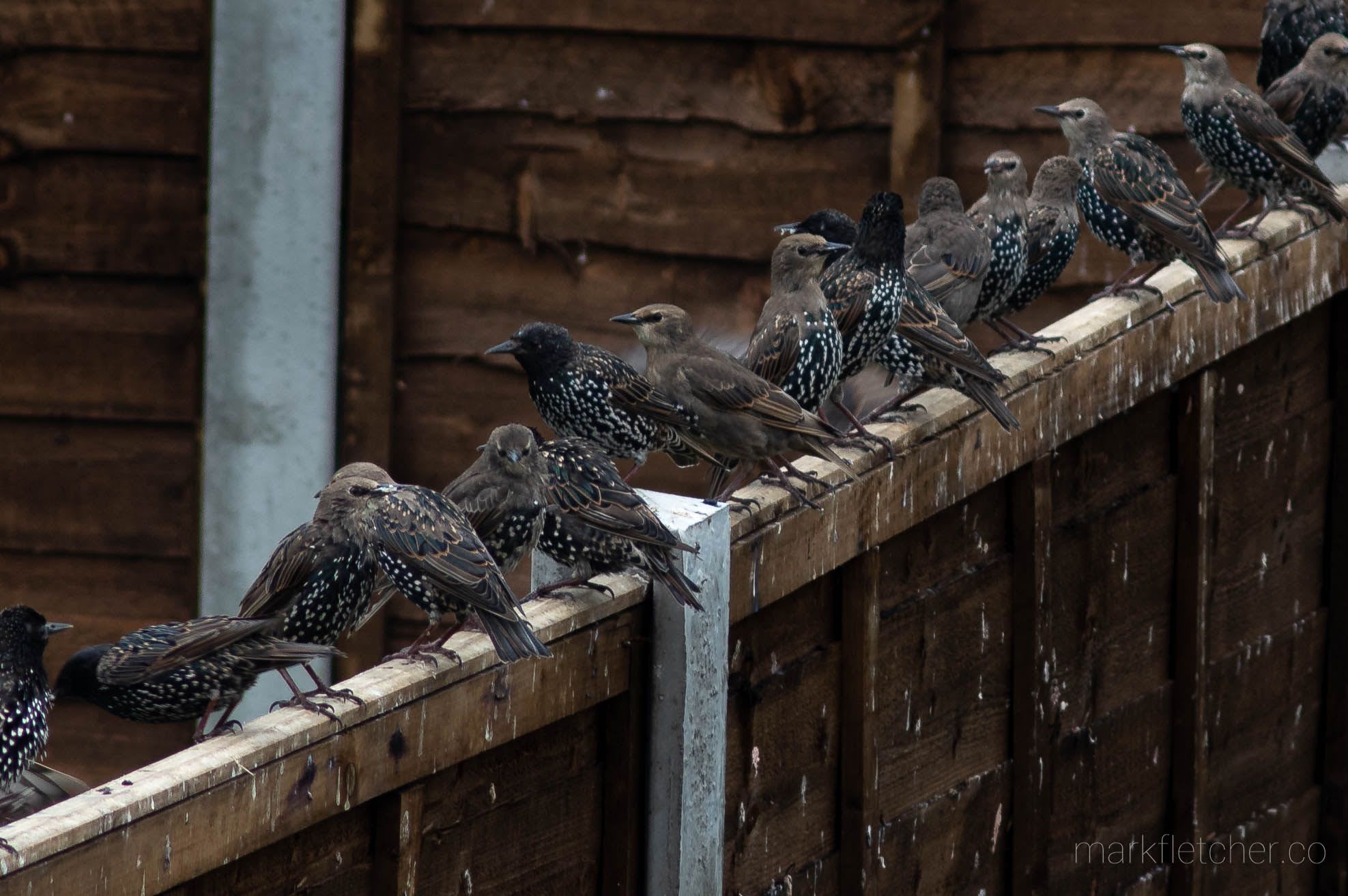
When my wife and I moved in three years ago, we put out a couple of bird feeders on old hanging basket hooks over the garage. It wasn’t hugely successful - we’d get the odd bluetit, pigeons scavenging the fallen seed, but on the whole the birds seemed to just pass us by. I chalked it up to the feeders not being in the best location, and we stopped refilling them.
We had new neighbours move in nine months ago. New fences went up, a bird table, and before too long…chaos. “I love feeding the birds”, she tells me.
Early mornings full of chattering, burbling, whistling starlings. Young and old. Hopping, jumping, flying, swooping. "Little aviators", engaged in dogfights and sorties. A gang. A mob. An invasion. Starlings, and lots of them. Sturnus vulgaris, imaginatively translates to “common starling”. A bird I’d sometimes dismissed as being brash and unexciting. Perhaps I’d not spent long enough looking?
From a distance, they seem plain black, but really they have a metallic sheen, shimmers of greens, blues and purple amongst the darkness, flecked with tan-coloured light. Eyes that can only be described as beady, feeding habits that have the appearance of greedy. The flock falls upon the feeders with gusto.
When they can’t get feed from humans, starlings eat invertebrates like leatherjackets. As the year progresses, their diet shifts and they begin to eat plants - true omnivores. As they eat more plant matter, their gut lengthens to allow them to digest the tougher material. Because of their flexible diet, they’re regarded as pests. Casual research found several sites offering tips on how to “get rid” of these social birds, due to their voracious consumption of ornamental plants and bullying behaviour on bird feeders.
“My neighbour complained” she said to me, one morning.
“Oh right?”
“About the birds, pooing on the fence and their garden. Ridiculous. She’s shot her bolt, I’m going to plant some conifers”
“Conifers?” I respond, cautiously.
A descending mass. Not quite to the dramatic scale of a murmuration, but a regular arrival of more than fifty individuals. They line the rooftops and chatter, causing aerials to judder and rattle with their accumulated mass. They swoop down, form queues on the fence and take it in turns to visit the bird table. And, yes, leave their mark down the fence. But they’re charming, really - characterful, elegant, skilled aviators. They’re playful. I’ve observed them almost dancing with each other, and harassing the collared doves by trying to stand on their backs.
I shut the door, the sound startling them and causing the whole flock to rise up as one with a furious vibration of wings. I hear them chattering on the roof above; they’ll be back.
